-
Engine4.4L Turbo V8
-
Power600 HP / 590 LB-FT
-
Transmission8-Speed Auto
-
0-60 Time3.5 Seconds
-
Top Speed205 mph
-
DrivetrainAWD
-
Engine PlacementFront
-
Curb Weight4,886 LBS
-
Seating5
-
MPG20 MPG combined
-
Base Price$143,795
The imposing and much-discussed kidney grille on the 2020 BMW 7 Series hasn't worked out all that badly. At least that's what we are told by Alpina's sales director, Erik Ploss. Orders shot up after the BMW tuning firm's ultra-luxurious, high-performance derivative, the Alpina B7, debuted at the Geneva auto show. In fact, he believes that the new design has brought in conquest buyers.
The 7's new, angular look indeed works well with the Alpina-specific enhancements, which include a low front spoiler, flared sills, a rear lip spoiler, a subtle diffuser, four fat tailpipes and Alpina's signature 20-inch thin spoke wheels.
Of course, there's much more to the 2020 Alpina B7 than styling. Before getting to the oily bits, though, let's quickly take a moment to reacquaint you with the company's heritage to better understand where the B7 comes from. In 1983, Alpina was officially registered as a car manufacturer and thus distinguished itself irrevocably from the tuning scene. It had previously developed an outstanding reputation with its innovative turbo engines developed by industry guru Professor Friedrich Indra.
When BMW launched its own M GmbH models, Alpina simply moved upwards: Its models were a tad more luxurious, extravagant and suave than the M GmbH's offerings. Tellingly, Alpina abandoned manual transmissions well before M GmbH.

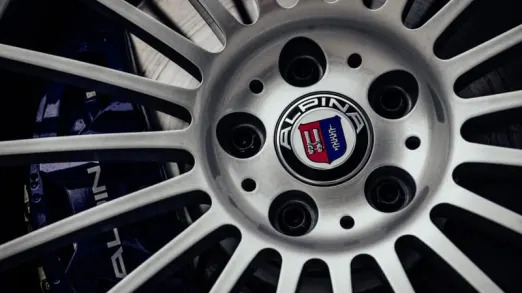

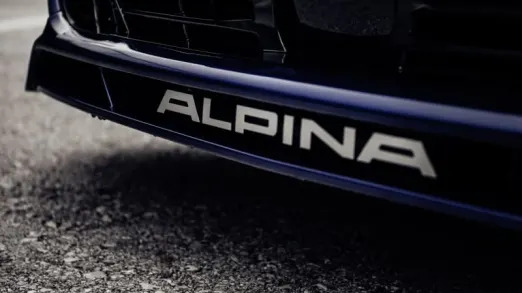
The new Alpina B7 is painstakingly designed to avoid too many similarities with BMW's own range-topping M760i xDrive. Visually, the B7 is based on the more elegant look of the regular 7 Series, while the M760i sports the aggressive, slightly overwrought M Sport package. The B7 has chrome window surroundings; the M760i's are blacked out. The classic Alpina Blue and Alpina Green metallic paint can only be had on the B7.
The main difference, however, is hidden under the hood: The B7 is powered by a 4.4-liter turbo V8, while the M760i is fitted with a 6.6-liter turbo V12. And while both cars produce an astounding 600 horsepower, the B7 is lighter by almost 300 pounds. It's therefore a tenth of a second quicker from zero to 60 mph and tops out at a class-leading 205 mph – a full 50 mph above BMW's in-house flagship. Until the new, 207-mph Bentley Flying Spur hits dealerships next year, the B7 is the fastest car in its segment by a considerable margin.
Put through the paces, the most striking experience is the incredible torque: Its 590 pound-feet are available from a low 2,000 rpm onwards. Compared to the pre-facelift model, Alpina has improved the powertrain in several areas. The flow between the cylinder heads and the new turbochargers has been optimized, and the torque curve is beefier.
Optimized for low-end torque and fitted with a revised shifting strategy for the buttery-soft and ultra-quick ZF eight-speed automatic, the B7 charges to 60 mph in a mere 3.5 seconds. This 4,866-pound behemoth's acceleration is an almost outerworldly experience and is underscored by a sonorous exhaust note that is not artificially speaker-generated, but the real thing.
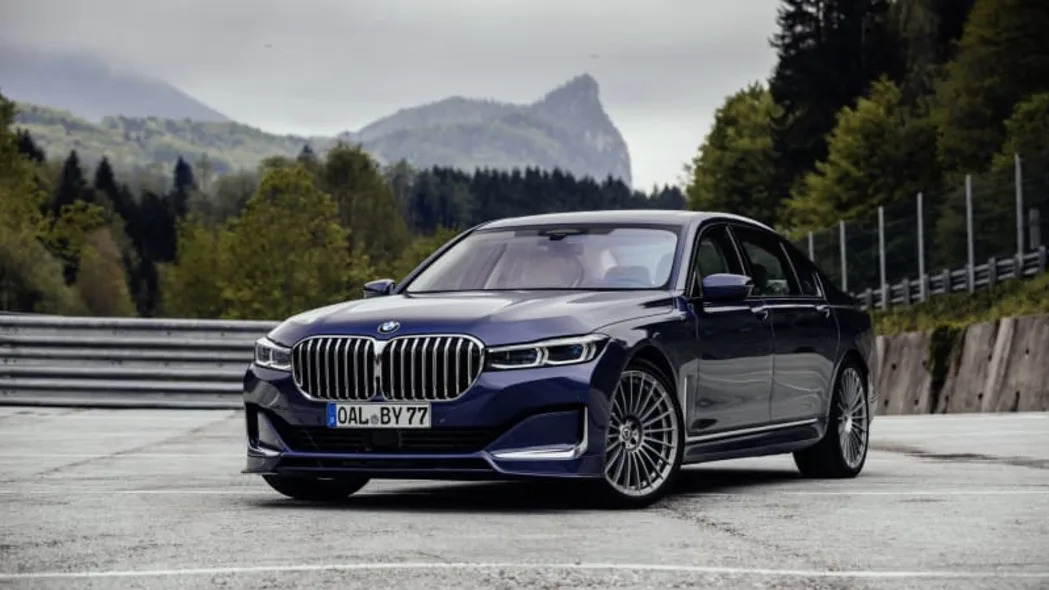
Even on Germany's Autobahn, the exhilaration just never ends, and while this writer's default mode is "go as fast as the car can," the B7 is so fast that it requires extraordinary prudence and judgment. Even on its home turf, few people expect a 200-mph-plus missile to approach from behind, and many sweeping curves become surprisingly tight at the lofty velocities this car can effortlessly reach.
Alpina has not just refined the transmission for measurably quicker acceleration, the engineers have also sharpened the character of the driving modes, which are now more clearly spread apart from each other.
In all of them, however, the B7 is supremely confident. The steering, optimized for agility, is very precise, and the rear-wheel-steering system is specifically adapted for the B7. The same applies to the air suspension, which lowers the car by about an inch as soon as the driver selects Sport Plus mode or speed exceeds 143 mph.
The camber and track are also slightly adapted for the B7, while the tires – 255/40 front and 295/35 rear – are fatter than on any other 7 Series, including the M760i. The standard all-wheel-drive system is more rear-biased than on the regular 7 Series, shifting up to 85 percent of the torque to the rear axle. The system works perfectly. While there is ever-so-slight understeer, you can confidently accelerate out of a corner at an early stage. The B7 also impresses in high-speed lane change maneuvers, never losing its composure (another benefit of the rear-wheel steering).

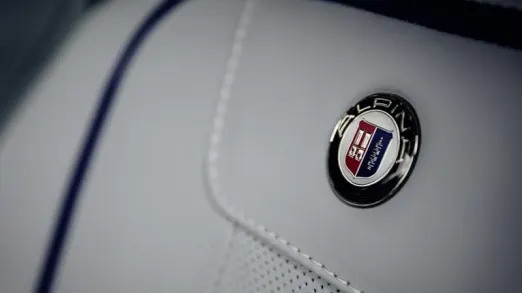
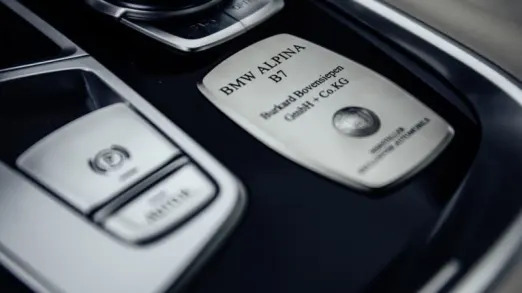
The B7 is fitted with steel brakes instead of carbon ceramic ones, a choice not dictated by cost issues. Alpina is convinced that steel brakes have a better pressure point, they can handle heat better, and braking distances can top those of carbon-ceramic brakes in some circumstances. It's hard to disagree with their conclusion. Even under repeated hard braking maneuvers, no fading was detected, the pressure point remained the same, and the brakes were perfectly easy to modulate.
As expected, the seats are not designed for the race track, but they ooze luxury and quality. The Alpina B7 is as comfortable and practical as a regular 7 Series, and thus an ideal 205-mph long-distance cruiser. You can tell it from a regular 7 Series by its Alpina-specific instrument panel display mode and Alpina-exclusive trim of piano black or myrtle wood (a Mars-colored red). Like the exterior, though, the full 7 Series color palette is available inside.
Priced at $143,795, the 2020 Alpina B7 almost seems like a bargain when you consider the slower M760i xDrive is about $15,000 more expensive. The B7 is also more exclusive, and not just compared to other 7 Series – it's one of those special cars that'll be a rare sighting whether it's driving down the road today or parked at a concours 25 years from now. And with that new grille, it'll be even easier to spot.
Related Video:
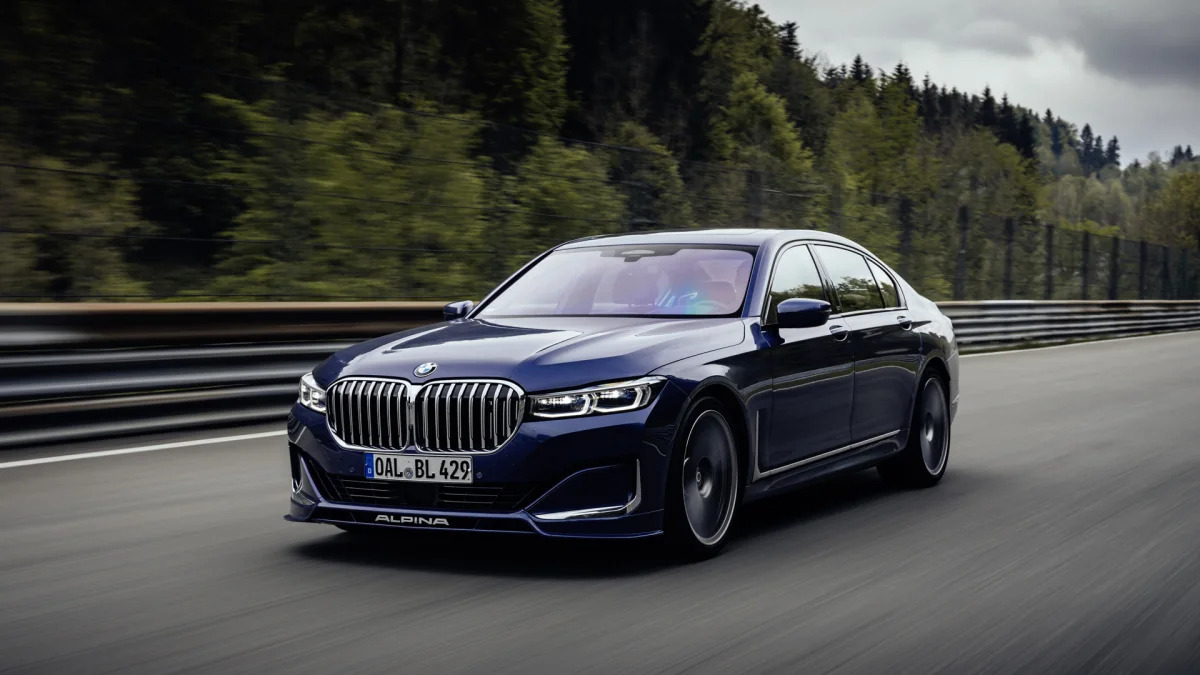









Sign in to post
Please sign in to leave a comment.
Continue